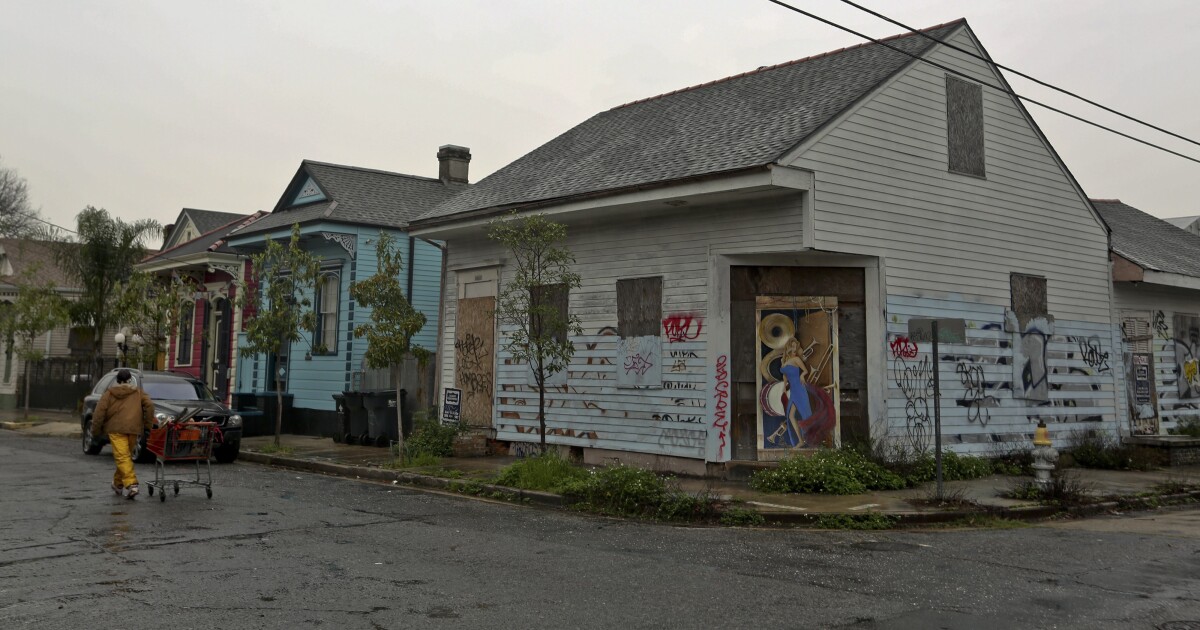Proposed federal cuts may hit the Southeast the most
6 min read

Bloomberg News
The GOP’s proposed federal cuts to Medicaid, Supplemental Nutrition Assistance Program, and the Federal Emergency Management Agency may hit the Southeast harder than any other region.
The three state governments with the highest percentage of federal government revenue in their state budgets are in the Southeast: Louisiana at 50.1%, Mississippi at 44.1% and Kentucky with 42.7%, according to the U.S. Census Bureau. Ten of the 11 Southeast states are higher than the 50-state average of 36.0%, with North Carolina being the exception.
Five of the country’s top nine state poverty rates are in the Southeast. Louisiana had the highest rate in the country, 18.9%, in 2023. Since Medicaid and SNAP benefits are aimed at low-income people, federal cuts to them are likely to pressure these governments — or at least the people who rely on those benefits — the most.
From 2015 to present four of the top seven states for federal emergency reconstruction aid as a percent of state gross domestic product were in the Southeast, according to Municipal Market Analytics Weekly Outlook.
Louisiana topped the cart at 4.2%, followed by Florida with 1.2%, West Virginia with 0.7% and North Carolina at0.5%). Federal emergency reconstruction aid is defined to include aid from FEMA and the U.S. Housing and Urban Development’s Community Development Block Grants.
Federal cuts to Medicaid and SNAP in the reconciliation bill passed by
“This would be hard for state and local policymakers to shoulder even when times are good, let alone now with their finances under growing strain and many economic forecasters citing increased risks of recession,” the CBPP wrote.
“It’s too soon to say what the full impact will be but it’s clear the states won’t be able to absorb the full costs of the proposed cuts,” said Brian Sigritz, director of state fiscal studies at the National Association of State Budget Officers.
North Carolina Gov. Josh Stein, a Democrat,
Senate Republicans are
Sigritz said NASBO’s major concerns with the proposed budget are proposed cuts to Medicaid and SNAP. The Congressional Budget Office estimated the Medicaid cuts at $793 billion over 10 years. There would be an additional roughly $300 billion in SNAP cuts. This would average out to about $110 billion in cuts per year, though the first two years would see less impact as cuts were rolled out.
For comparison, Sigritz said the states spend a bit more than $66 billion a year on corrections and public safety.
Making the challenge tougher, states are already experiencing tight circumstances with slowing revenue growth, the wind-down of federal COVID-19 aid and increasing spending demands, Sigritz said.
Several
In Louisiana, Mississippi, and Kentucky, inflation-adjusted tax revenues declined in the first 10 months of fiscal 2025, said Lucy Dadayan, principal research associate at the Urban–Brookings Tax Policy Center.
The budget act Trump signs will probably vary from the current House version. In the House version from the date of enactment SNAP regulations would change to expand its work requirements to include adults with school-age children, older adults 55 to 64 and people in areas with scarce jobs.
States, which don’t pay any of the SNAP benefits now, would starting in late 2027 be required to pay between 5% to 25%, depending on program error rates, and would immediately take on 75% of SNAP’s administrative costs, up from 50%.
From the date of enactment there would be limits on taxes on medical entities like hospitals and nursing homes, which states use to support Medicaid. There would also be a reduction in state payment rates for Medicaid.
By 2027 those who enrolled in Medicaid as part of recent expansions would be required to work. Finally, starting in October 2027 federal contributions for Medicaid would be reduced for states that allow Medicaid be used for immigrants without legal status and many with legal status.
Tim Storey, CEO of the National Conference of State Legislators,
Not all observers are alarmed by the possible impact of federal cuts. “It will be confusing and there will be pain,” but the measures are restoring the proper balance of responsibilities between the states and the federal government, said Dominic Calabro, president and CEO at Florida TaxWatch.
While Florida’s state government will get less federal aid, Floridians will be able to pay less in federal taxes than otherwise, Calabro said.
With Medicaid, some states will pick up some of the coverage and support the federal government is withdrawing, Calabro said. Other states will innovate. Calabro said he hoped Florida will take the latter path.
The Heritage Foundation’s Stern said proposed Medicaid and SNAP changes “should actually have no effects on state budgets.” Payments to hospitals will be reduced if they provide Medicaid benefits to undocumented immigrants, which is a reasonable goal, he said.
The proposed measures seek to strengthen work requirements to make sure those who can work do work, Stern said. It is fair for states to withhold money from those who refuse to work.
Stein said work requirements backfire if their stated goal is true.
“Lessons learned from two other states that implemented work requirements have shown that these policies don’t increase employment, but instead increase bureaucracy, administrative costs, and result in more eligible people losing their coverage,” he said.
S&P Global Ratings in an end of April report said the impact of Medicaid cuts on state governments’ credit “will come down to what changes are made, the significance of the cost shifts, and the time frame states are provided to adjust to the new policy directives.”
While
Stern said the budget includes an effort to reduce fraudulent claims. This may actually help states experiencing natural disasters because there would be more money for their genuine needs, he said.
In a research piece S&P Global Ratings released earlier this month, it said reduced federal emergency aid could have a material impact on those state and local governments most affected by disasters. Trump administration policy on the topic was evolving, it said.
In its Weekly Outlook, MMA said the downside of FEMA practices “is that it supports moral hazard by providing predictable (and often repeated) post-disaster aid to affected communities without strong requirements and enforcement of mitigation measures as a pre-condition. Shifting post-disaster recovery efforts and costs to the states could reasonably reduce rebuilding and recovery costs … by facilitating greater pre-disaster mitigation investments, implementing stricter building codes, and curtailing mechanisms that support insurance premiums/participation that is decoupled from risk-based pricing.”







